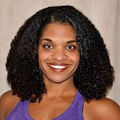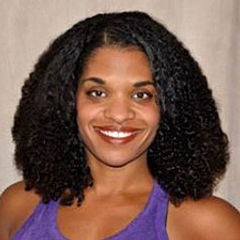If you’re a newly certified group fitness instructor (GFI), you may be having mixed emotions about your next steps. You know that leading group fitness classes will be a rewarding experience. At the same time, you may be wondering, “Will I be a good instructor? Do I even know enough about fitness to be teaching? What if my participants can tell I’m nervous?” Rest assured, these feelings are normal. You’ve already taken the first monumental step—passing the group fitness instructor exam. This serves as proof that you have a solid grasp on the technical and theoretical skills you need to succeed as a GFI. Now it’s time to build your confidence and practical skills. Here are six tips to help you do just that.
1. Start teaching
Once you’ve earned your group fitness instructor certification, you’ll want to take a little time to think about what formats best fit your interest and current skillset. But don’t take too much time. I meet many newly certified instructors who delay teaching simply because they are nervous about their first time getting up in front of a group. You will probably be a little nervous the first few times you teach group fitness classes. Do it anyway. The best way to get good at teaching is to teach, and as with anything else in life the more you do it, the less nervous you’ll be. You may find it helpful to team teach a few times with an experienced instructor. Ask if you can teach the warm up or cool down portion of a class you enjoy attending. Before you know it, you’ll be teaching a full class on your own.
2. Find a mentor
Remember that awesome class that made you fall in love with group fitness? Chances are it wasn’t the class, but the instructor, who made you feel amazing that day. Maybe you left the workout feeling challenged but successful. A great instructor can facilitate this type of experience for class participants consistently. They offer exercise variations and modifications to make workouts not only enjoyable, but inclusive and accessible too. These instructors encourage participants to work hard when appropriate and to slow down or pull back when necessary. As a newly certified instructor, having this type of mentor will be priceless. Learn all you can from them. Pick their brain about exercise ideas for special populations. Invite them to attend your classes occasionally to provide constructive feedback. This type of support will allow you to hone your teaching skills early in your fitness career.
3. Practice, practice, practice
Winging it works for some things, but it is certainly not the best approach for teaching group fitness classes, especially when you’re a new instructor. You owe it to your participants to come to class prepared. And you owe it to them to practice. It’s important to practice with correct form, though. Growing up, I had a violin teacher who used to say, “Practice doesn’t make perfect; practice makes permanent.” That sentiment was true for my childhood music recitals, and it’s true for leading group fitness classes. How you practice the exercises is how you’ll execute them in class. If you know that your squats, planks or push-ups need work, do the work. Devote adequate time to correcting your own body mechanics so that you can demonstrate exercises correctly and safely for your group fitness participants.
4. Continue to take classes from other instructors
It happens to many of us. We start off just teaching one or two classes a week. Eventually, we find ourselves teaching several days a week and maybe weekends, too. Often, the more group fitness classes we teach, the fewer classes we take. Some instructors quit attending other group fitness classes altogether. Try to avoid this pitfall. You may not be able to get to other group fitness classes often, but go when you can. Attending other group fitness classes can be a source of inspiration as you continue to develop your own teaching style. Savannah, Georgia group fitness instructor Megan Feasel-Erwin offers this tip: “I have been teaching group fitness classes for 15 years and make it a priority to go to other instructors’ classes so I can learn new exercises, new music, new routines and see how other instructors engage their members. Every instructor teaches differently, and that is the beauty of our diverse fitness world.”
5. Find your unique teaching voice
There will be great instructors you’ll want to emulate, but remember—there is only one you. Recognize your individual talents and use them in your role as a group fitness instructor. Dayton, Ohio group fitness instructor Yamika Leeper-Stephens encourages new instructors to be themselves to create a group fitness environment that’s enjoyable for both the participants and the instructor. “It is important to be your unique self. This is your connection to the group. Speak boldly, be confident and have fun while you are leading.”
6. Commit to being a lifelong learner
Your commitment to being a lifelong leaner is vital to your success as a group fitness instructor. Attend continuing education workshops. Read health and fitness articles. Pursue additional certifications. Not only will you earn CECs—which are required to keep your certification current—you’ll also grow and become a more knowledgeable fitness professional. This will give you more employment options and provide leverage for negotiating pay. Most importantly, professional development will keep you relevant and informed in a fitness industry that is growing and changing every day.
You now have the unique opportunity in front of you to inspire healthy change in others. As a group fitness instructor, you’ll get more people moving, and you’ll play an integral role in helping others reach their personal health and fitness goals. Enjoy every minute!
With a group fitness instructor certification, you have the ability to get the most people moving, every day, and to make a tremendous impact on the health and well-being of your community. Find out more about ACE’s Group Fitness Instructor Certification.




 by
by 










